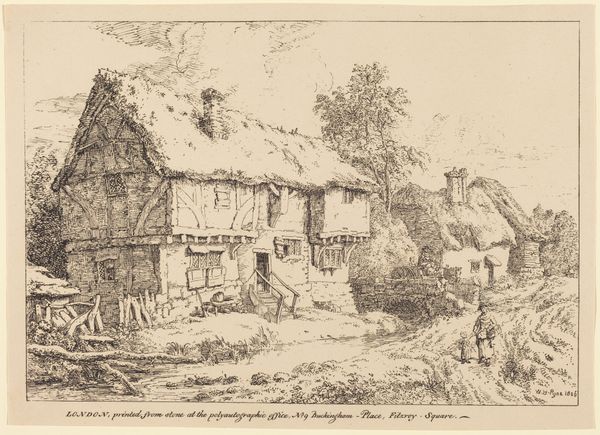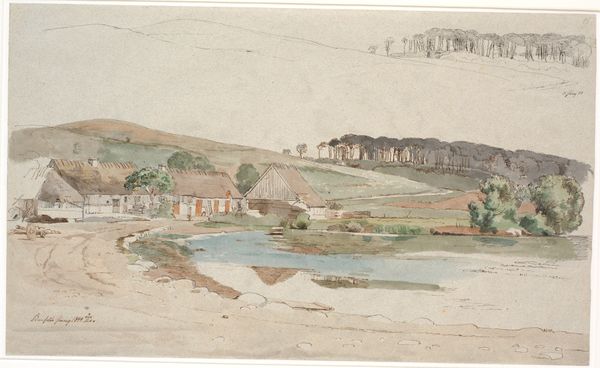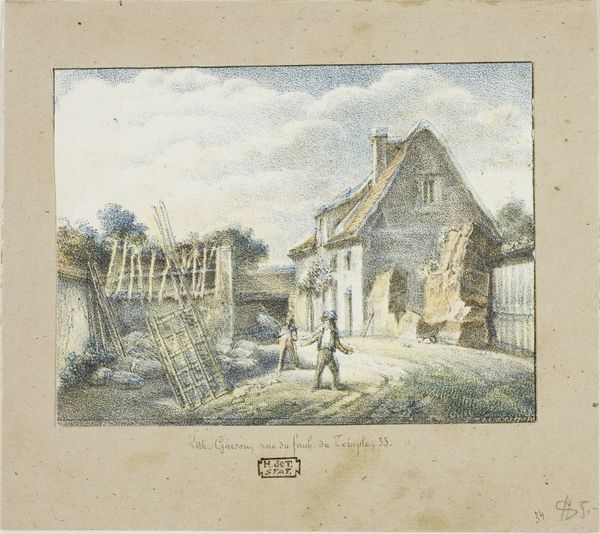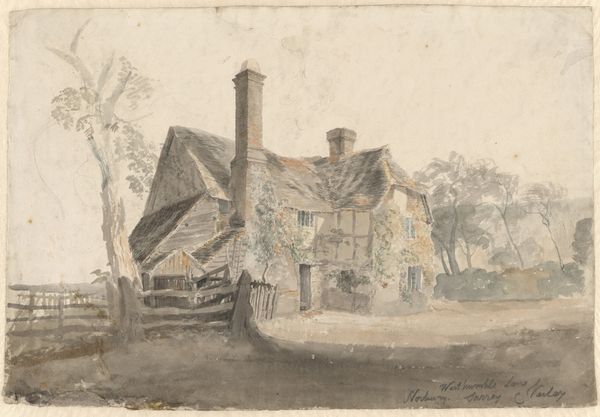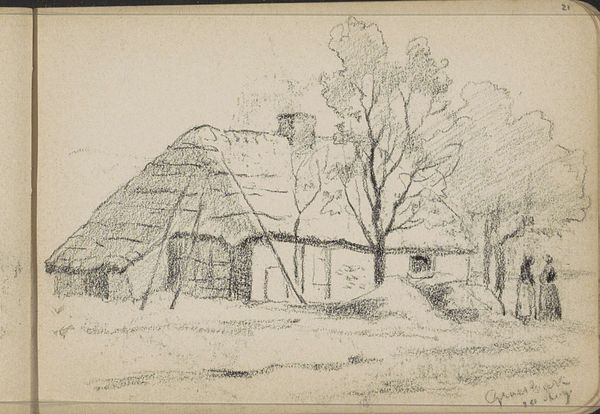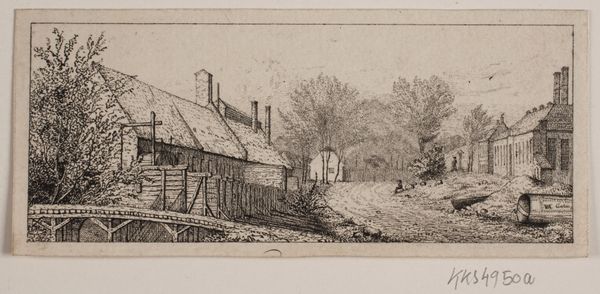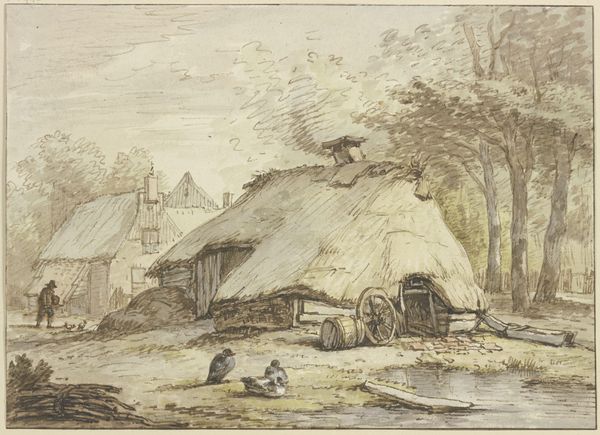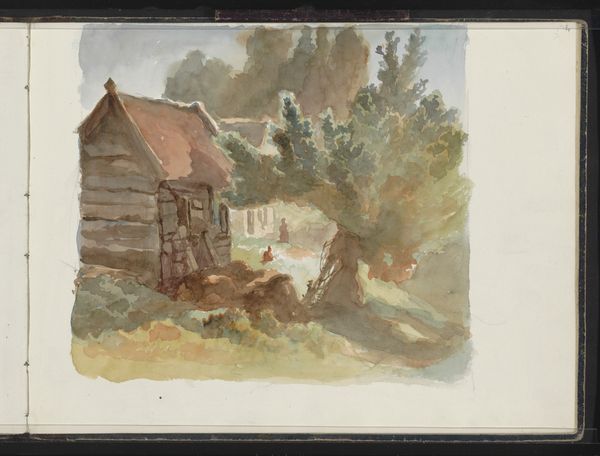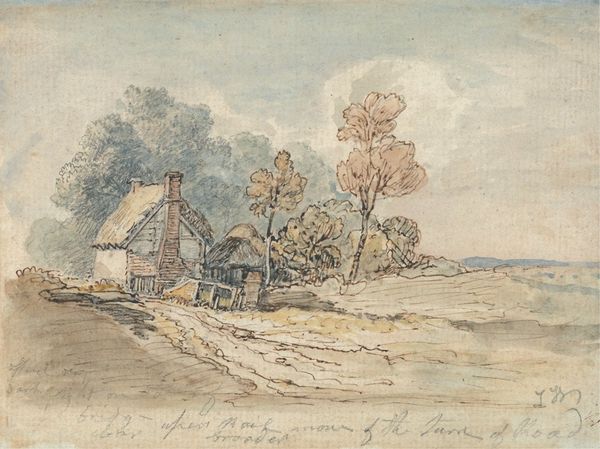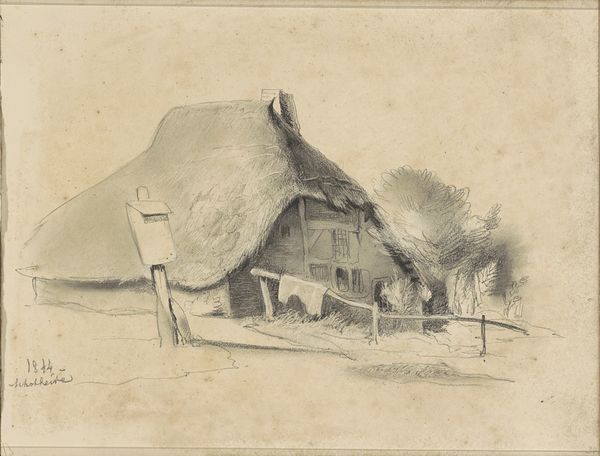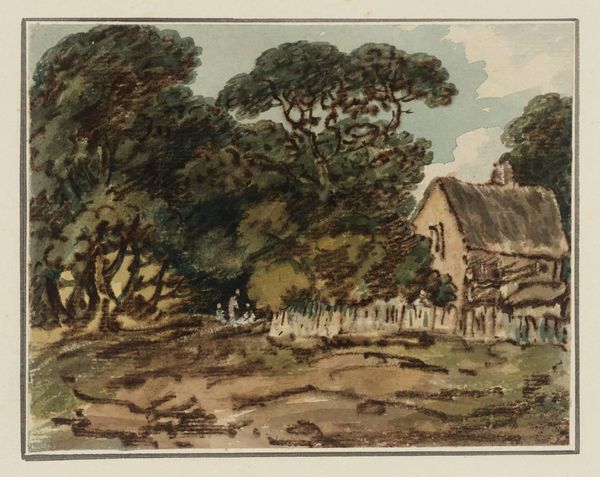
drawing, painting, watercolor
#
drawing
#
painting
#
landscape
#
watercolor
#
coloured pencil
#
genre-painting
#
watercolor
#
realism
Dimensions: sheet: 17.9 × 26.2 cm (7 1/16 × 10 5/16 in.)
Copyright: National Gallery of Art: CC0 1.0
Curator: Let's discuss George Richmond’s "A Farm near the Sea at Margate, Kent," created around 1850 using watercolor and possibly colored pencil. It captures a rural scene with thatched buildings, typical of the Kent countryside. Editor: There's a charming simplicity to it, wouldn't you agree? The way the buildings nestle into the landscape and that weathered tree on the left side is fascinating. What I am immediately drawn to, though, is the artist's depiction of buildings as a harmonious aspect of the pastoral existence, so deeply integrated into the landscape. Curator: Indeed, Richmond often sought to present a particular version of rural harmony, which ties into larger Romantic-era debates. Considering this within a critical framework, what is deliberately being shown – and what's omitted? What socioeconomic realities are rendered invisible through this aestheticized vision of agrarian life? Editor: I'm more intrigued by the literal nuts and bolts of this: how does the production of watercolor paint shape how he can picture farm labor and its spaces? Thinking about the handmade paper as a luxury good of the era too. I imagine what kind of relationship the rural communities captured may have with paintings like these and Richmond himself. I’m always compelled by those interactions between class and depiction. Curator: Right, there’s the art object's own production in context of broader economy and modes of making and how access is granted, or denied, on class lines. I mean we have the very romantic idea of rural existence facing off the industrialising economy! We are facing here a deeply political art piece. Editor: These structures – the haystacks, the thatching – depend on so much local knowledge. What farming practices helped give rise to these very structures. And even what consumption cycle keeps farm alive? The paintings immortalises the practice for its consumption Curator: These scenes offered both a vision of stability during upheaval and obscured the challenges faced by rural communities. Looking at such pieces now can serve to historicize and politicise. What did this 'harmony' really look like for the many? Editor: Agreed, digging into those material details always raises critical questions about how these landscapes are constructed. It provides a framework, I find, to start that discussion.
Comments
No comments
Be the first to comment and join the conversation on the ultimate creative platform.
